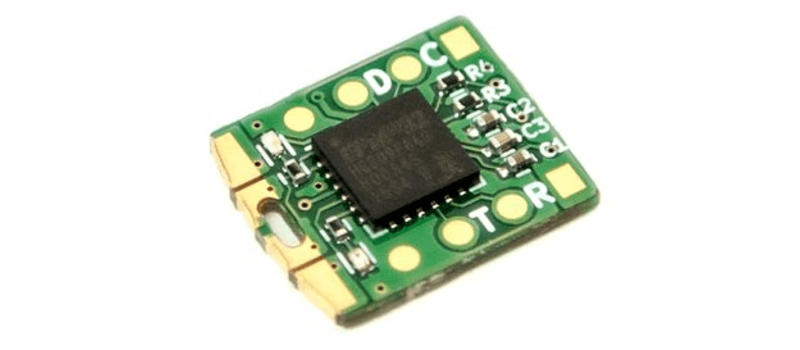Controlling a quadcopter with hand gestures Typical uses of augmented reality devices involve inserting and manipulating digital content in the physical world. I wanted to go one step further and use an augmented reality device to manipulate a physical object. A quadcopter seemed like a natural choice, given my interest in the FPV hobby. This project uses two devices: a Microsoft HoloLens, and a Crazyflie 2.0 Nano Quadcopter. The Jumper Wire
Is it time for open processors? The disclosure of the Meltdown and Spectre vulnerabilities has brought a new level of attention to the security bugs that can lurk at the hardware level. Massive amounts of work have gone into improving the (still poor) security of our software, but all of that is in vain if the hardware gives away the game. The CPUs that we run in our systems are highly proprietary and have been shown to contain unpleasant surprises (the Intel management engine, for example). LWN.net
TOMU: A microcontroller for your USB port Looking for a ultra tiny development board? Tomu is an ARM Cortex M0+ device that fits inside your USB port. We've seen these in person, and they're tiny. There's a few commercial devices in this form factor on the market. For example, the Yubikey Nano emulates a keyboard to provide codes for two-factor authentication. The Yubikey's tiny hardware does this job well, but the closed-source device isn't something you can modify. Hackaday

Some basic rules for securing your IoT stuff Most readers here have likely heard or read various prognostications about the impending doom from the proliferation of poorly-secured "Internet of Things" or IoT devices. Loosely defined as any gadget or gizmo that connects to the Internet but which most consumers probably wouldn't begin to know how to secure, IoT encompasses everything from security cameras, routers and digital video recorders to printers, wearable devices and "smart" lightbulbs. Krebs on Security
Making WebAssembly even faster: Firefox's new streaming and tiering compiler People call WebAssembly a game changer because it makes it possible to run code on the web faster. Some of these speedups are already present, and some are yet to come. One of these speedups is streaming compilation, where the browser compiles the code while the code is still being downloaded. Mozilla
Skygofree: Following in the footsteps of HackingTeam At the beginning of October 2017, we discovered new Android spyware with several features previously unseen in the wild. In the course of further research, we found a number of related samples that point to a long-term development process. We believe the initial versions of this malware were created at least three years ago - at the end of 2014. Securelist
Programmable droplets MIT researchers have developed hardware that uses electric fields to move droplets of chemical or biological solutions around a surface, mixing them in ways that could be used to test thousands of reactions in parallel. The researchers view their system as an alternative to the microfluidic devices now commonly used in biological research, in which biological solutions are pumped through microscopic channels connected by mechanical valves. MIT
Remote-controlled DNA nanorobots could lead to the first nanorobotic production factory By powering a self-assembling DNA nanorobotic arm with electric fields, German scientists have achieved precise nanoscale movement that is at least five orders of magnitude (hundreds of thousands times) faster than previously reported DNA-driven robotic systems, they suggest today (Jan. 19) in the journal Science. Kurzweil AI
Designing customizable self-folding swarm robots Robot swarms generally come in two flavors. You've got your homogenous swarms, made up of tens or hundreds or sometimes thousands of identical robots. You've also got your heterogenous swarms, made up of a handful (or possibly a few tens) of robots that aren't all identical, and may in fact be significantly different. IEEE Spectrum
Improvising an EPROM programmer For a project (revitalizing a large 80's liquid crystal display) I needed to program an EPROM. The EPROm should contain a character font that goes into the LCD so it can show characters. The EPROM required was a 2764, this is a 64 kilobit (8kiB) eraseable programmable read only memory, which is eraseable by ultraviolet light. Charles Ouweland
Reverse engineering FPGAs In this talk I describe the basic makeup of FPGAs and how I reverse engineered the Xilinx 7 Series and Lattice iCE40 Series together with the implications. Media.ccc.de